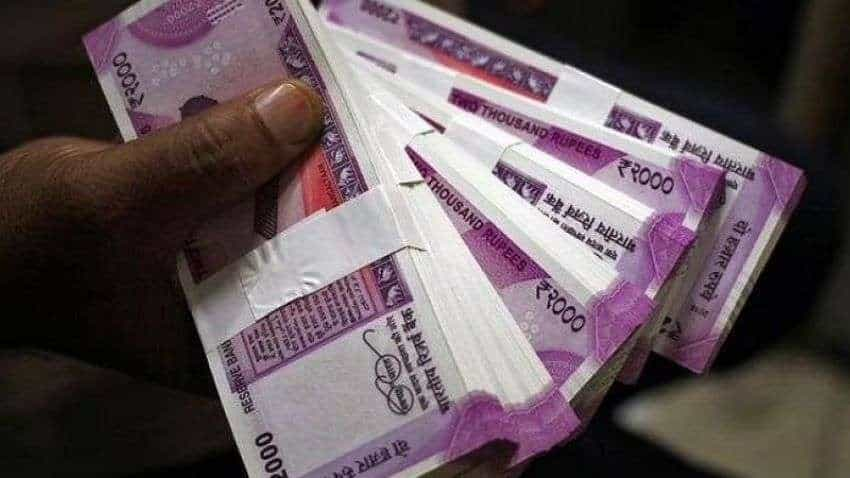Gross NPAs of banks may decline to 6.9% by March 2022: Report
GNPAs and NNPAs stood at 8.6 per cent and three per cent, respectively, as on March 31, 2020.

Gross non-performing assets (NPAs) and net NPAs of banks are likely to decline to 6.9-7 per cent and 2.2-2.3 per cent, respectively, by the end of March 2022 as compared to 7.6 per cent and 2.5 per cent, respectively, as of March 31, 2021, according to a report by rating agency ICRA.
See Zee Business Live TV Streaming Below:
GNPAs and NNPAs stood at 8.6 per cent and three per cent, respectively, as on March 31, 2020.
"The GNPAs and NNPAs are expected to further decline to 6.9-7 per cent and 2.2-2.3 per cent by March 2022, which will continue to be a relief for the bottomline (profit) of lenders," the credit rating agency said in the report.
The fresh NPA generation rate (or slippages) remained elevated during the second wave in absence of regulatory relief such as moratorium, it said.
The gross fresh slippages during the April-June 2021 quarter stood at Rs 1 lakh crore (annualised slippage rate of 4.1 per cent) compared with Rs 2.5 lakh crore or 2.7 per cent during FY2021.
The agency expects this to remain elevated at Rs 0.7-0.8 lakh crore (2.8-3.2 per cent) during Q2 FY2022 but moderate to Rs 1.1-1.2 lakh crore (2-2.4 per cent) during H2 of this fiscal as the impact of second wave wanes.
Of the total restructured loan book of Rs 2 lakh crore for the banks as on June 30, 2021, the restructuring under the first coronavirus wave is estimated at 51 per cent of the total restructuring of Rs 1 lakh crore, while restructuring under the second wave is estimated at 31 per cent of the total restructuring or Rs 0.6 lakh crore, it said.
The agency's Vice-President (financial sector ratings) Anil Gupta said that considering that 30-40 per cent of the loan book was under moratorium during Q1 FY2020 across most banks, the loan restructuring at two per cent of advances after the second wave is a positive surprise and much lower than our earlier estimates.
"Despite the positive headline numbers, we continue to be watchful of the asset quality, given the elevated levels of the overdue loan book and for the performance of the restructured loan book," Gupta said.
As per ICRA's estimates, the public sector banks (PSBs) may not need the capital budgeted by the government for FY2022 even with enhanced capital requirements. However, it provisions for any unforeseen events and shall provide confidence to banks as well as investors and credit growth.
It said large private sector banks (PVBs) also remain well-capitalised though few mid-sized PVBs could need to raise capital.
"We continue to maintain our credit growth estimate of 7.3-8.3 per cent for banks for FY2022 compared to 5.5 per cent for FY2021," Gupta said.
Despite expectations of moderation in gains on bond portfolios because of expectations of rising bond yields in FY2022, the return on equity for banks is likely to remain steady at 4.4-7.6 per cent for PSBs (5.1 per cent in FY2021) and 9.5-9.9 per cent for PVBs (10.5 per cent in FY2021), the report said.
Get Latest Business News, Stock Market Updates and Videos; Check your tax outgo through Income Tax Calculator and save money through our Personal Finance coverage. Check Business Breaking News Live on Zee Business Twitter and Facebook. Subscribe on YouTube.
RECOMMENDED STORIES

SBI 444-day FD vs PNB 400-day FD: Here's what general and senior citizens will get in maturity on Rs 3.5 lakh and 7 lakh investments in special FDs?

Small SIP, Big Impact: Rs 1,111 monthly SIP for 40 years, Rs 11,111 for 20 years or Rs 22,222 for 10 years, which do you think works best?

SCSS vs FD: Which guaranteed return scheme will give you more quarterly income on Rs 20,00,000 investment?

Rs 3,500 Monthly SIP for 35 years vs Rs 35,000 Monthly SIP for 16 Years: Which can give you higher corpus in long term? See calculations
03:04 PM IST










 Government completed NPA recovery of Rs 1,23,299 crore in FY23-24, says Finance Minister Nirmala Sitharaman
Government completed NPA recovery of Rs 1,23,299 crore in FY23-24, says Finance Minister Nirmala Sitharaman Icra revises banking sector outlook to 'positive', expects NPAs to decline further to decadal best
Icra revises banking sector outlook to 'positive', expects NPAs to decline further to decadal best High NPAs in education loan segment turn banks cautious
High NPAs in education loan segment turn banks cautious PNB aims to recover Rs 32,000 cr from bad loans resolution this fiscal
PNB aims to recover Rs 32,000 cr from bad loans resolution this fiscal Bank of Maharashtra profit more than doubles to Rs 452 crore in Q1; stock jumps 5%
Bank of Maharashtra profit more than doubles to Rs 452 crore in Q1; stock jumps 5%